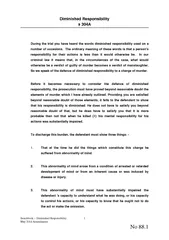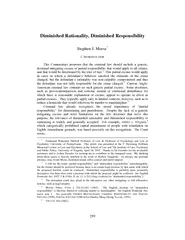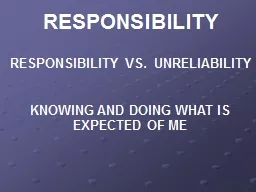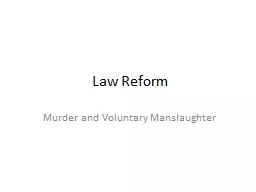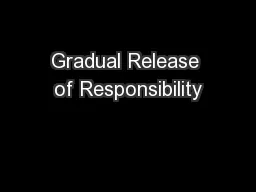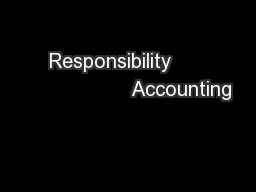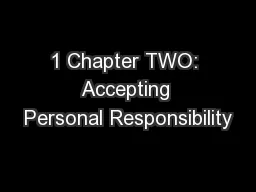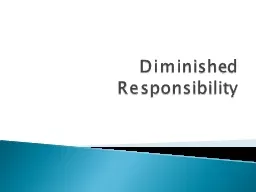PPT-Diminished Responsibility
Author : evadeshell | Published Date : 2020-08-26
Diminished Responsibility A charge of murder can be reduced to voluntary manslaughter where the defendant can successfully argue one of the following defences Diminished
Presentation Embed Code
Download Presentation
Download Presentation The PPT/PDF document "Diminished Responsibility" is the property of its rightful owner. Permission is granted to download and print the materials on this website for personal, non-commercial use only, and to display it on your personal computer provided you do not modify the materials and that you retain all copyright notices contained in the materials. By downloading content from our website, you accept the terms of this agreement.
Diminished Responsibility: Transcript
Download Rules Of Document
"Diminished Responsibility"The content belongs to its owner. You may download and print it for personal use, without modification, and keep all copyright notices. By downloading, you agree to these terms.
Related Documents


